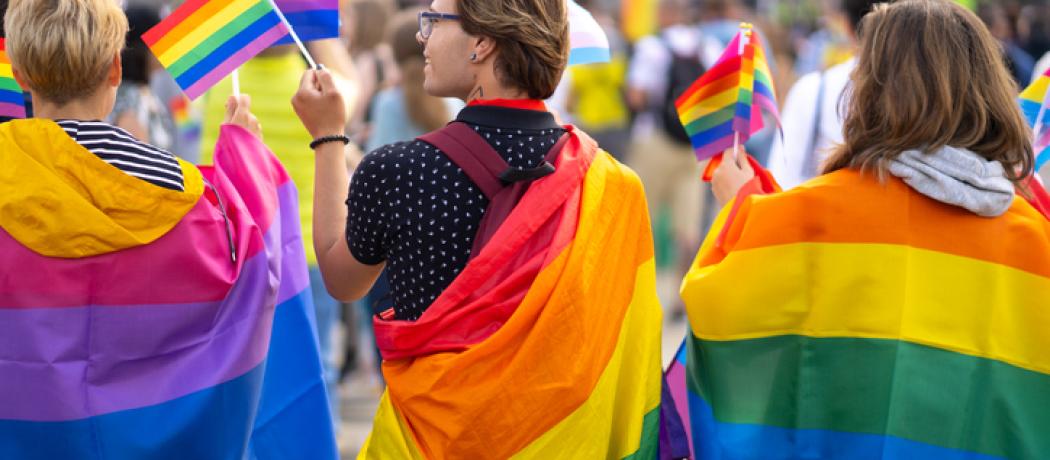My interest in the development of relevant medical educational and health care programs for LGBTQIA2S+ people was sparked after reading The New Life by Tom Crewe, a student of 19-century British history. Although the story is presented as historical fiction, it is based on the efforts of Dr Henry Havelock Ellis (1859–1939), a pioneer medical sexologist, and his associates in the late 1800s.
Inventing the term “sexual inversion” for what today we would call gay or homosexual practices, these pioneers fought for decriminalization of gay love and opened the door for major social and political progress for new ways of living and loving.
In recent years, Canada has taken significant steps in promoting LGBTQIA2S+ rights—apologizing for past mistreatment, committing to expunge criminal records, creating nonbinary gender options in passports, and passing legislation to protect transgender people from discrimination. Yet public school education and medical education in this area is still lagging.
Egale Canada (formerly Equality for Gays and Lesbians Everywhere) is an advocacy organization with a vision of a Canada, and ultimately a world, without homophobia, biphobia, transphobia, and all other forms of oppression so that every person can achieve their full potential free from hatred and bias.
The organization conducted a study of 4000 Canadian students in 2021 and found that (in grades 8 through 12) 64% of participants reported homophobic comments daily or weekly at school, 30% of “2SLGBTQI+” respondents had been victims of cyberbullying—compared to 8% of cisgender heterosexual respondents—and 57% of trans respondents had been targets of mean rumors and lies.
One of Egale’s objectives is to make an inclusive classroom for all learners. This will require teachers sharing respectful and supportive classroom policies, exposing students to the lives of a diverse range of people, and normalizing diverse human experiences.
A 2021 article in the CMAJ raised the case for creating a Canadian standard for including LGBTQIA2S+ in medical education. The article points out that Two Spirit, lesbian, gay, bisexual, transgender, queer, intersex, and asexual Canadians still experience disproportionately poor health outcomes because health care providers receive inadequate training in LGBTQIA2S+ care. The authors propose that national standardization, mandating inclusion of LGBTQIA2S+ curricula in undergraduate and postgraduate medical education, will better support health care for this community.
It is not yet clear how appropriate curricular content would be implemented into undergraduate and postgraduate medical education. There seems to be a need for a two-level approach. As a foundation toward change, it would be important to first promote a phobia-free classroom and clinical environment. This may be partially achieved with formal lectures on specific issues, which would legitimize physicians’ focus on identifying patients’ self perspective, obtaining necessary details in history taking and physical examinations, considering hormone therapy assessment, and offering reviews of safe sexual practices, fertility issues, cancer screening, mental health, and substance use concerns. Second, specialty areas of medicine would begin acting on the recognition that health issues in LGBTQIA2S+ people manifest in all disciplines of medicine.
In spite of my many years of professional work in the areas of sexual medicine and sexual and reproductive rehabilitation, I am still somewhat lost in the definitions of the LGBTQIA2S+ or cis-hetero nomenclatures. The definitions below may serve those interested in promoting the health care of this community. (Definitions are from https://kidshelpphone.ca/get-info/2slgbtq-what-does-it-mean.)
2S (Two Spirit): a person with both a feminine and a masculine spirit living in the same body. This is an important term within some cultures or for some Indigenous persons.
Bisexual: a person who is emotionally, physically, and sexually attracted to their own and other genders.
Cisgender: a person whose gender identity and expression match the sex they were assigned at birth.
Gay: a person identifying himself as a man who is emotionally, physically, and sexually attracted to other men.
Intersex: a person born with male and female sex organs.
Lesbian: a person identifying herself as a woman who is emotionally, physically, and sexually attracted to other women.
Nonbinary (trans): persons who define their gender outside of the gender binary of men and women.
Queer: a broad term that includes people with any of the sexual orientations and gender identities other than straight/cisgender.
Questioning: persons who feel unsure about their sexual orientation or gender identity.
Transgender: a person whose gender identity differs from the sex they were assigned at birth.
+ (plus): other orientations.
Other terms: genderqueer, genderfluid, gender nonconforming, nonbinary androgynous.
—George Szasz, CM, MD
Suggested reading
ABC Life Literacy Canada. How to make an inclusive classroom for 2SLGBTQI+ learners. Accessed 6 July 2023. https://abclifeliteracy.ca/blog-posts/how-to-make-an-inclusive-classroom-for-2slgbtqi-learners.
Schreiber M, Ahmad T, Scott M, et al. The case for a Canadian standard for 2SLGBTQIA+ medical education. CMAJ 2021;193:E562-E565.
Wikipedia. Egale Canada. Accessed 6 July 2023. https://en.wikipedia.org/wiki/Egale_Canada.
This post has not been peer reviewed by the BCMJ Editorial Board.
 |
| This work is licensed under a Creative Commons Attribution-NonCommercial-NoDerivatives 4.0 International License. |

